For this year´s Valentine´s Day I present a very special pillowcase. The big heart is filled with an openwork figural pattern.
Figural patterns are a common part of Schwalm whitework filling patterns. You will learn more about this special type of filling pattern in future articles this year.
This pattern is very special because it conforms to the heart shape. The heart outline has to be established first. Unfortunately, the linen used for the example is not an evenweave; it has a thread count of 17/18 in the height and 13/14 in the width.
But how does one get it the correct size for the design? There are three different possibilities.
1. The easiest way is to adjust the design matching it to the openwork grid of the inner heart after it is established.
2. The second way is to count the threads to determine the size of the needed section:
The design measures 50 squares along the vertical center axis from the top point to the lower point of the heart and 40 squares along half the horizontal axis directly below the top point of the heart. One square needs 4 fabric threads; this means you have to count from the top point of the heart downwards 200 threads and from the top point to the left or to the right 160 threads. I recommend adding 8 threads each time you count out a section just to be safe. Mark all three points and measure the distance. Adjust your heart design to be the required size, and transfer it to the linen.
3. The third way is calculating:
Count your linen threads precisely and calculate the needed measurement. For example, for a linen with a thread count of 13.5/cm, you need 200 (208) threads in the height – 200 ÷ 13.5 = 14.81 cm (208 ÷ 13.5 = 15.41 cm). So, the inside of the heart shape should measure about 15.5 cm from the top point to the bottom point.
You need 160 (168) threads for half of the width – 160 ÷ 13.5 = 11.85 cm (168 ÷ 13.5 = 12.44 cm). So inside of the heart shape from the top point to one side should measure about 12.5 cm.
Because I think evenweave linen with a thread count of 13.5 is well-suited for openwork, I added the required size for this linen in the pdf document, which also includes a chart of the design.
First, all prep work is done: transferring; working stems, tendrils, and the pair of outlines with Coral Knot stitches; embroidering leaves, scallops, and half-eyelet scallops with Blanket stitches; working interlaced Herringbone stitches between the two outlines; and stitching Chain stitches inside the inner outline.
The openwork grid is established by cutting 2, leaving 2 – starting directly below the top point of the heart.
Now the grid needs to be secured. In the example, the grid is secured with Single Faggot stitches (Openwork Pattern Samplers). (Commonly openwork grids in Schwalm whitework are made with Cable stitches, but Single Faggot stitches make the pattern appear more clearly, and this is important for such a pattern.)
It is good to have a hoop wide enough for stretching the entire pattern into it.
Using needle-weaving stitches – in the example all the needle weaving is done vertically (i.e., from bottom to top and back again) – and occasional Rose stitches, embroider the pattern into the grid following the provided chart or your adjusted chart.
Finished as a pillowcase and filled with a coloured inlay, the pillow develops a special charm.
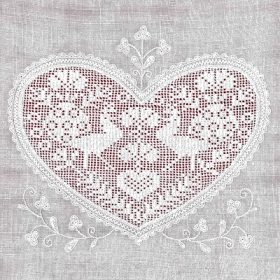

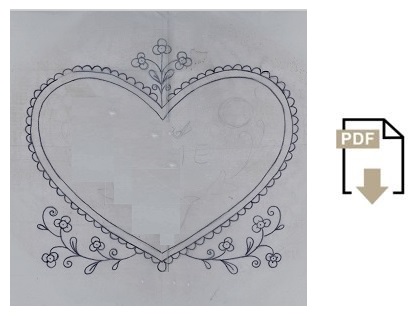
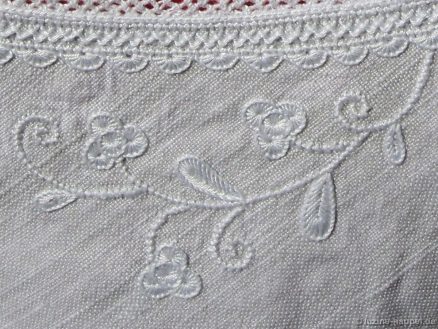
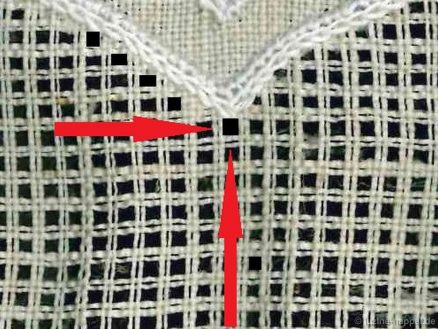
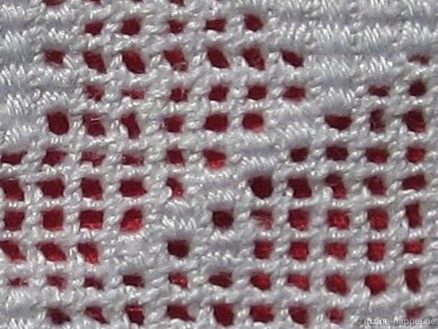




This is so beautiful.
Yes, Nancy Anne, it is beautiful. The pillow has already found many lovers, so I thought it a good idea to share it with my blog readers.
Lovely design, thank you for sharing! Next step is to figure out the size of the Heart! 🙂
I look forward to see the result and hope, all will turn out well!